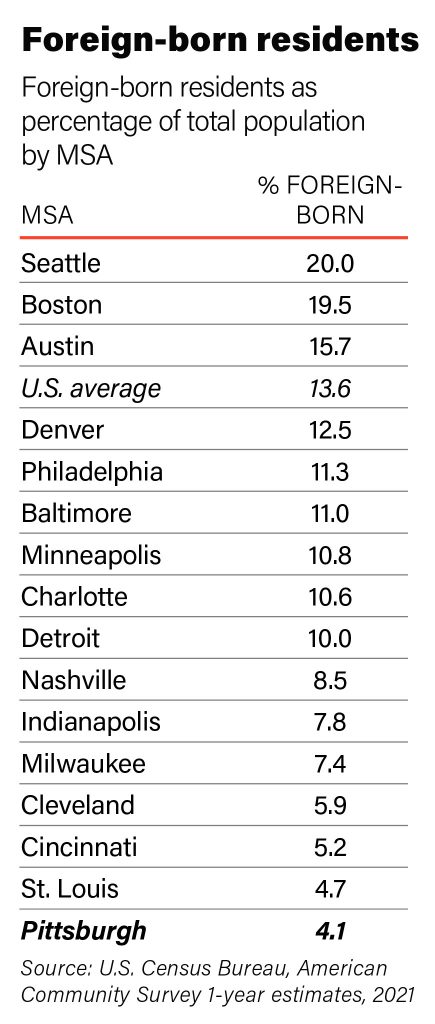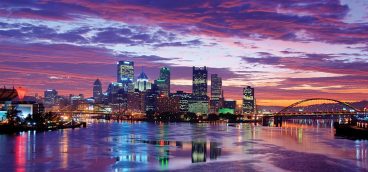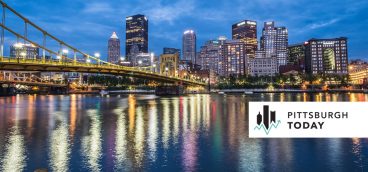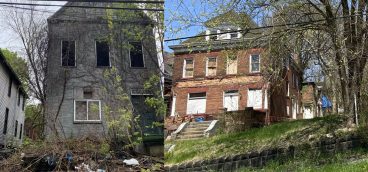
Allegheny county’s small population bump from 2010 to 2020 owes much to a spike in the number of immigrants who decided to make it their home. They accounted for more than 60 percent of the 27,000 residents the county added overall.
Without the gains in foreign-born residents, southwestern Pennsylvania as a region would have been looking at another decade of shrinking population, rather than the tiny increase it managed.
Such trends underscore how influential immigration has become in shaping the populations of cities, states and regions as growth in the number of U.S.-born residents slows.
But while immigrants are playing a larger role in southwestern Pennsylvania, their numbers here remain small. Foreign-born residents make up only 4 percent of the population in the seven-county Pittsburgh Metropolitan Statistical Area — much smaller than the national average of 13.5 percent. Pittsburgh also has the lowest share among Pittsburgh Today’s 16 peer metro areas. By comparison, foreign-born residents make up about 19 percent of the population in Boston and Seattle, which have the highest rates among the 16 benchmarked regions, according to U.S. Census data.
Contributions that immigrants make to southwestern Pennsylvania go beyond helping shore up local population numbers. They’re well educated. Sizable numbers work in industries with high-growth potential for the regional economy, such as the life and physical sciences, computers and engineering. And they are younger, on average, than the U.S. population as a whole, an important characteristic in a senior citizen-heavy region needing to get younger.

“Pittsburgh has the potential to be a global city,” said Betty Cruz, president and CEO of the World Affairs Council of Pittsburgh, who oversaw public efforts to make the city a more welcoming place for immigrants as former Mayor Bill Peduto’s deputy chief of special initiatives. “We have the right ingredients in our academic and economic assets, industries, policymakers and people. We’ve done a lot in the last decade to move forward. But we’re still behind. There’s still a lot to do.”
That hasn’t always been the case. In 1910, more than 25 percent of the region’s residents were born in another country. Signs written in Hungarian, Italian, Serbo-Croatian and Slovak didn’t cover all of the languages spoken in the region’s booming mills and factories. That year, nearly 450,000 immigrants called the region home.
In 2020, after a decade during which it grew by 28 percent, the region’s foreign-born population stood at less than 94,000 people.
Most live in southwestern Pennsylvania’s urban core. Nearly 74,000 live in Allegheny County, including the city of Pittsburgh. That’s 79 percent of the region’s foreign-born residents. They account for 9 percent of the city’s population and more than 6 percent of county residents.
All seven Pittsburgh MSA counties experienced an increase in their foreign-born populations from 2010 to 2020, census data suggest. But their numbers are thin in counties outside of Allegheny. Westmoreland has the largest number among the outer-ring counties with 5,860 foreign-born residents, who account for 1.7 percent of its population. Only 400 live in Armstrong County, where their share of the population is well south of 1 percent.
The region’s foreign-born residents come from a diverse mix of nations that span the globe from China, India and Italy to Brazil, Cuba, Mexico, Somalia and Bhutan. Some 48 percent come from countries in Asia; 19 percent were born in European nations; and 16 percent were born in Latin American countries.
Urban centers typically are more attractive to immigrants. Metro areas offer immigrants more of what they need to navigate life in their new country, including larger public transit systems, and more accessible resettlement, language, legal and other services. Allegheny County and the City of Pittsburgh have strategies, programs and services in place to improve the support that local government offers international newcomers.
The economic opportunities available in a region greatly influence how attractive it is. Finding work is an immediate necessity. Whether immigrants can find jobs that match their skills and offer a path to careers and greater success often determines whether they decide to stay or go. Housing is important. Rising housing costs, such as the marked appreciation seen in Pittsburgh neighborhoods, can present challenges for immigrants forced to find affordability outside the city in places where public transportation they rely on is more limited.
Southwestern Pennsylvania missed the waves of immigration the U.S. has experienced since the last half of the 20th century. Economic opportunities for newcomers were limited when the steel industry was booming and fully employed. Then the industry’s collapse brought massive job loss. The region has struggled to grow as a destination for immigrants since.
But it ranks high as a place where immigrants can thrive — seventh best in the nation, according to a recent study by the George W. Bush Institute at Southern Methodist University. Attributes that push it into the Top 10 include foreign-born residents having a median household income of greater than $65,000 a year, which is better than the region as a whole; the region’s modest cost of living; and the fact that more than 58 percent of its foreign-born residents have a bachelor’s or higher degree, which is the highest such rate in the nation.
How the region’s foreign-born population will trend in the coming years is unclear. Overall, it rose a healthy 28 percent from 2010 to 2020, with popular destinations within the region doing much better. Allegheny County welcomed 30 percent more foreign-born newcomers as residents over that time, and Pittsburgh welcomed 45 percent more.
But much of that gain occurred in the first half of that decade, before 2016, which was a trend seen nationwide. Foreign-born residents made up 13.5 percent of the U.S. population in 2016. The national rate was unchanged five years later.
In southwestern Pennsylvania, the region’s foreign-born population grew by less than 6 percent in the second half of that decade, which was marked by heated public debate over tightening U.S. immigration policy, early pandemic disruptions and an unsettled economy. The region added only 865 foreign-born residents from 2020 to 2021, the lowest number in years, census estimates suggest.
Why immigrants choose to stay or leave is complicated and often involves more than whether they find jobs, the services they need or feel accepted in their new community. “Belonging isn’t just about being seen for your strengths and respected for who you are,” Cruz said. “It is also being able to see yourself in the faces of your neighbors. Even in the most welcoming communities, if you’re the only one, it is going to be a challenge to feel like you truly belong.”
Most U.S. metro regions have larger foreign-born populations than southwestern Pennsylvania, giving them an edge in that regard. But no matter how few in number they may be, Cruz said that good reviews from them tend to generate positive buzz back home. “We’ve seen that the communities that have grown here — the Somali-Bantu, the Bhutanese community — have grown because people who landed here chose to stay and told friends and family this is a place to set roots.”













